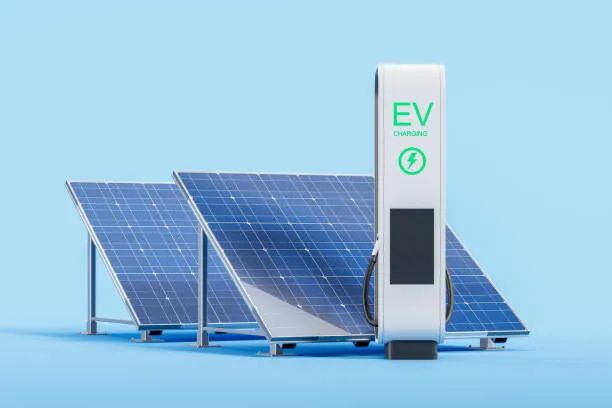


Solar EV Charging: A Cleaner, Smarter Way to Power Your Drive
Powering the Future with the Sun: Solar EV Charging
As a leading EV charger manufacturer in China, LiCB Charge offers reliable AC and DC electric vehicle charging stations, along with comprehensive charging solutions to meet diverse needs.
As the world accelerates toward cleaner transportation and energy solutions, solar EV charging — the practice of powering electric vehicles using sunlight — is emerging as a powerful tool in the push for net-zero emissions. Combining solar energy generation with electric mobility, this green solution offers both environmental and economic benefits.
What is Solar EV Charging?
Solar EV charging involves using solar panels to convert sunlight into electricity, which is then used to charge electric vehicles. A typical setup includes rooftop solar panels, an inverter, and an EV charger. Energy can either charge the vehicle directly or be stored in a battery system for use at night or on cloudy days. This method not only cuts emissions but also reduces reliance on the grid and protects users from rising utility rates.
How Does It Work at Home?
Charging an EV at home with solar power is both practical and cost-effective. Several factors influence its success:
System Size: Residential solar systems generally range from 5 kW to 15 kW. A larger system provides more power for both home use and EV charging.
Charger Type: Level 1 chargers are slow (about 2 kW), while Level 2 chargers (7–22 kW) are more suitable for solar integration.
Time and Weather: Solar production peaks midday. To counter variability, battery storage systems can store excess energy.
EV Battery Size and Usage: Larger batteries or long-distance driving requires more energy.
Smart Charging: Advanced systems prioritize solar usage and avoid drawing from the grid during expensive peak hours.
Energy Output vs. Driving Needs
For example, a 7 kW solar system can generate roughly 28–35 kWh on a sunny day — enough to power an EV for about 90–110 miles. However, real-world results depend on household electricity use, making energy management and storage important.
Cost Benefits
Charging an EV from the grid costs about $66/month at $0.16/kWh — and potentially more when using public chargers. Solar EV charging, while requiring upfront investment, allows homeowners to lock in electricity costs for 20+ years. With tax credits like the U.S. Federal Solar Investment Tax Credit, the payback period is significantly reduced.
Environmental Impact
Solar EV charging dramatically cuts carbon emissions. A gas-powered car emits around 4.6 metric tons of CO₂ annually. An EV charged with solar power produces near-zero emissions — making it a true clean-driving solution.
Challenges and the Road Ahead
Initial costs, solar intermittency, and system integration are key challenges. However, incentives, falling technology costs, and growing installer expertise are making solar EV charging more accessible. Innovations like bidirectional charging, solar carports, and smart grids will further improve efficiency and flexibility.
Conclusion
Solar EV charging is more than a trend — it’s a sustainable shift in how we power mobility. It helps reduce emissions, save on energy costs, and promote energy independence. As technology advances and adoption grows, solar-powered transportation stands as a smart investment in a cleaner, greener future.Know more about Google SEO Directory
